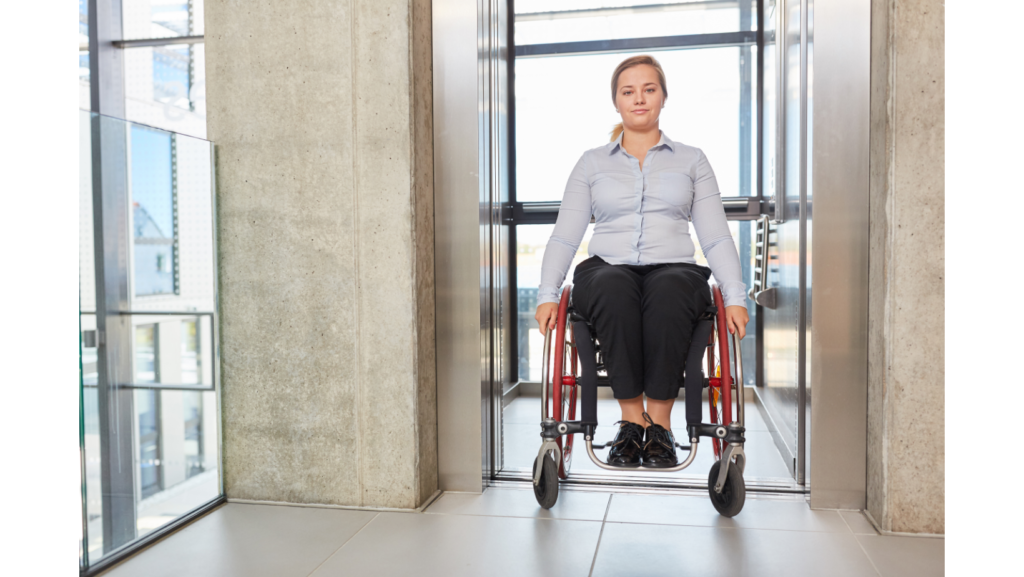Seizure First Aid in a Wheelchair: Learn first aid to help someone having an epileptic seizure while confined in a wheelchair, a car seat, or a stroller.
Seizure Definition
Epilepsy is a chronic condition characterised by a person experiencing a recurrent seizure. Most people who have this condition have more than one type of seizure and other symptoms.
A seizure (or convulsion) occurs due to abnormal electrical activity in the brain. It can result in uncontrollable jerk movements and loss of consciousness. It can happen to people at any age and at any time.
Some people will experience an “aura” or warning before having seizures. But in most cases, there is no warning at all.
Signs And Symptoms
After an attack, the person may need a few hours to recover as the experience can be traumatising and physically demanding. Common signs of seizures include:
- Twitching, jerking, movements in the face and limb area
- Stiffening of the body
- Difficulty breathing
- Loss of consciousness, leading to falls
- Loss of bladder or bowel control
- Blue tinge to the lips
- For children having febrile convulsion: flushed and dry skin
Types Of Seizures
There are two known types of seizures: partial and generalised. In a partial seizure, the person may or may have impaired consciousness. The person may also experience uncontrolled movements and an episode that may last one or two minutes.
At this point, the person may be slightly aware of their surroundings but have no control of their own response and behaviour.
While in a generalised seizure, the person may experience a complete loss of consciousness. There is a tendency that they will fall unconscious and suffer from injuries.
Sometimes, a person with seizures is in a wheelchair, car seat, or stroller. There are considerations to apply when attending to this type of attack.
Considerations For Wheelchair Use During Seizure Attacks

- The wheelchair will need straps that you can easily remove to help them out during an attack.
- If the person in the wheelchair often has seizures that can cause falls, add some padding or use protective gear not to hurt their head.
- If the person has epilepsy and is not receiving proper treatment, refer them to a doctor.
If diagnosed with epilepsy, the doctor will provide a care plan. This will include what to do before, during, and after an attack. Also, whether moving the person from a wheelchair to place into the recovery position is safe.
Seizure First Aid
Here’s a guide pf the dos and don’ts of providing seizure first aid support to a person in a wheelchair.
DO:
- Protect the person from falling by installing seat belts
- Make sure the wheelchair, stroller, or car seat is secure
- Support the person’s head. Put something soft under it to help if no headrest is attached to the wheelchair.
- Remove hard and sharp objects that can hurt the person’s arms and legs
- Stay with the person and provide comfort and reassurance.
DO NOT:
- Restrain the person to try and stop the seizure.
- Put anything in the person’s mouth.
- Remove the person in the wheelchair if the seat provides some support.
- Leave the person alone. Stay close and monitor their condition.
Seek immediate medical assistance if the seizure activity lasts for more than five minutes or if a second attack quickly follows. Call an ambulance if the person remains non-responsive and consciousness does not return minutes after the episode ends.
Learn more about the dos and don’ts of seizure first aid here.
Conclusion
In an epileptic seizure, it is helpful to know what to do and when to call an ambulance.
When the seizure ends, check the airway, and make sure that the person is breathing normally. Remove them from the wheelchair at the end of the attack only if it is safe to do so.
Learn first aid to help someone having seizures in a wheelchair.
Visit our website First Aid Courses Darwin for more information.








